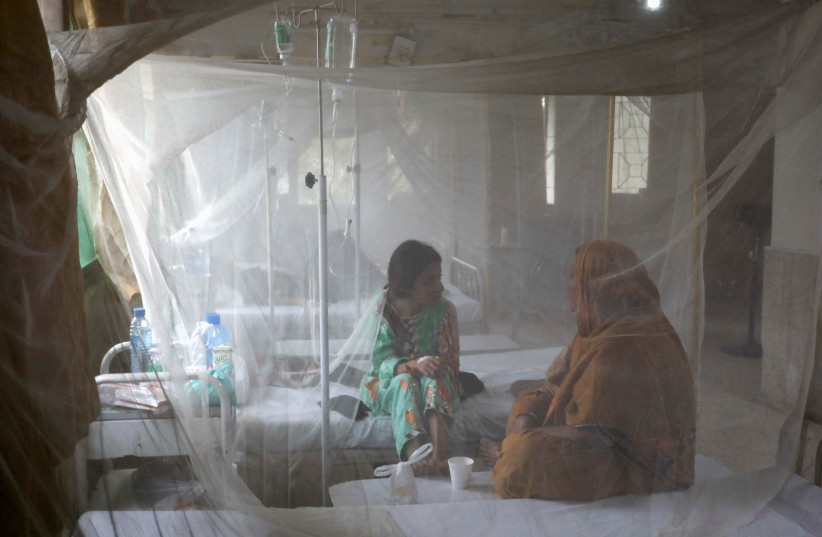Bioengineers develop fake skin to study how mosquitoes transmit diseases

Researchers developed gelatin-like patches called hydrogels, which contain vessels of blood that mosquitoes can smell.
Researchers have developed gelatin-like patches that imitate skin and can therefore be used to better understand how mosquitoes transmit diseases, according to a new study published on Thursday.
The researchers at Tulane and Rice University published their findings in a peer-reviewed study in the Frontiers in Bioengineering and Biotechnology journal.
The patches, called hydrogels, contain vessels of blood that mosquitoes can smell.
The hydrogels are used at the School of Public Health and Tropical Medicine at Tulane, where they are 3D printed and tested on mosquitoes from the insectary, which produces over 1,000 mosquitoes per week.
"In recent years, advances in 3D bioprinting have enabled high-resolution patterning of vascular structures in biocompatible materials," the study noted. "Additionally, these materials often support perfusion of blood to further mimic biological tissue. These advances enable researchers to substitute native or explanted tissues with synthetic alternatives for certain applications, thereby reducing cost and limiting ethical concerns."
Bioengineers at Rice developed the gels, as well as a machine learning software that analyzes video and looks for patterns in the mosquitoes' feeding behavior.
"During the early stages of model development, approximately 50 still images were extracted from these videos. These images were pre-processed by downsizing to 416 × 416 pixels to reduce computation time and by disregarding images that do not contain any mosquitoes," the study read.
The study found that the hydrogels were a more consistent environment for mosquito testing, regardless of species, and that DEET and repellant made from lemon eucalyptus oils repelled the mosquitoes effectively while they fed on the hydrogels without repellant.
Deadliest animal in the world?
Over 725,000 deaths occur per year due to mosquito-borne diseases, such as malaria, Zika, dengue fever, West Nile virus and yellow fever, according to the World Health Organization. Mosquitoes may therefore be the world's deadliest animal.
Hydrogels are a ‘huge game changer’ - researcher
As it can be expensive and inconsistent to use live mice and humans in studies regarding mosquito feeding, the hydrogels provide an alternative that increases scientists' ability to study disease transmission and test repellants.
“It’s a huge game changer,” said Dawn Wesson, an associate professor of tropical medicine at Tulane University. “If we can study how they (mosquitoes) feed, what they do in the process of feeding, we can better understand their potential for transmitting diseases and possibly do things to stop them from feeding.”
Jerusalem Post Store
`; document.getElementById("linkPremium").innerHTML = cont; var divWithLink = document.getElementById("premium-link"); if (divWithLink !== null && divWithLink !== 'undefined') { divWithLink.style.border = "solid 1px #cb0f3e"; divWithLink.style.textAlign = "center"; divWithLink.style.marginBottom = "15px"; divWithLink.style.marginTop = "15px"; divWithLink.style.width = "100%"; divWithLink.style.backgroundColor = "#122952"; divWithLink.style.color = "#ffffff"; divWithLink.style.lineHeight = "1.5"; } } (function (v, i) { });

